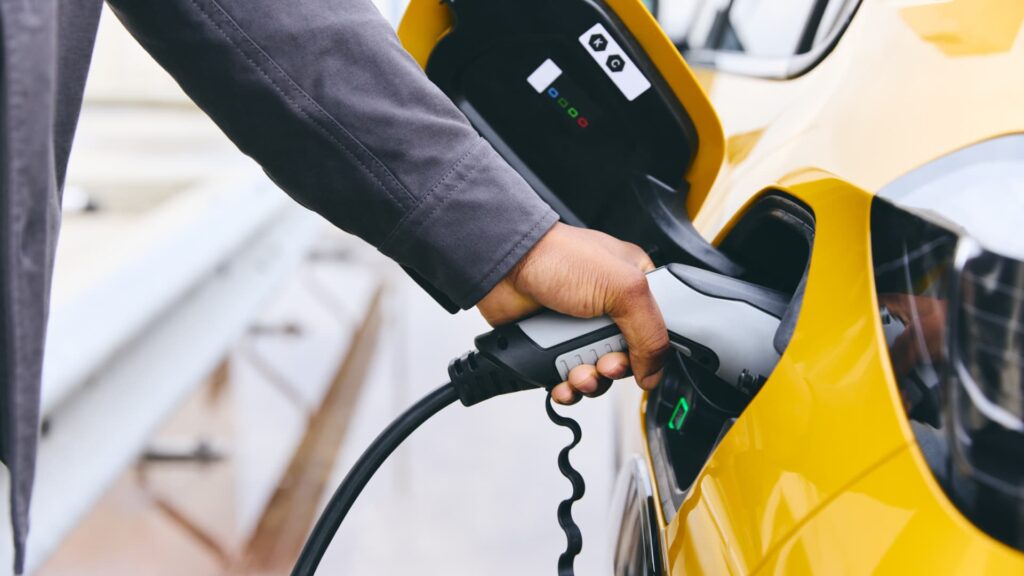A federal tax break worth up to $7,500 for new EVs and up to $4,000 for used ones expires Sept. 30, but new Internal Revenue Service guidance says shoppers can still qualify if they sign a binding contract and make a payment before the deadline, even if the car is delivered later.
Previously, eligibility was tied to the delivery date. That meant even if a buyer signed a contract before Sept. 30, they could lose the credit if shipping delays pushed delivery into October.
The tax break is still only claimed once the buyer takes possession of the vehicle, but the qualifying date is now tied to the contract and payment, the IRS says. This makes qualifying for the credit less of a risk for those purchasing close to the deadline.
“The added wiggle room” is especially helpful to “shoppers who want to buy a vehicle that’s located in another state and needs to be shipped to them, or who would like to order a car that hasn’t yet been manufactured,” says Andy Phillips, vice president of the Tax Institute at H&R Block. “In both cases, they might run out of time to get the car delivered before the deadline.”
How to qualify for the Clean Vehicle Credit
The Inflation Reduction Act of 2022 overhauled a long-standing federal EV tax credit, renaming it the Clean Vehicle Credit, extending it through 2032 and adding new income, price and manufacturing requirements. However, with the passage of the President Donald Trump’s tax and spending megabill, the credit is now set to expire Sept. 30.
To qualify for the credit, eligible models must be assembled in North America and meet sourcing requirements for battery components and critical minerals.
Buyers must also meet income limits: $300,000 or less for joint filers or $150,000 or less for single filers. For used cars, the income limits are lower: $150,000 for joint filers and $75,000 for single filers.
Vehicle price caps apply as well: $80,000 for SUVs, vans and pickups, and $55,000 for other new cars. Used EVs must be at least two model years old and cost $25,000 or less.
What buyers can do now
Since 2024, qualifying buyers have been able to transfer the credit at the point of sale, lowering the price directly at the dealership instead of waiting to claim it on their tax return. Dealers are now required to check vehicle eligibility through the IRS system, but buyers remain responsible for ensuring they meet the income limits.
If you plan to buy before the deadline, ask the dealer to prepare a written purchase agreement and record a deposit or trade-in on or before Sept. 30. Keep copies of the signed contract, the payment receipt and the dealer’s point-of-sale documentation.
Buyers who don’t “make a down payment, such as those taking advantage of promotional low-interest financing, should be aware that skipping this step could make them ineligible for the credit,” says Phillips.
Another option to consider is leasing. Since leased EVs are treated as commercial purchases, they’re exempt from income and sourcing restrictions, letting dealers apply the full $7,500 credit to almost any EV and pass the savings along, regardless of the buyer’s income or the model’s battery sourcing.
Want to stand out, grow your network, and get more job opportunities? Sign up for Smarter by CNBC Make It’s new online course, How to Build a Standout Personal Brand: Online, In Person, and At Work. Learn from three expert instructors how to showcase your skills, build a stellar reputation, and create a digital presence that AI can’t replicate. Sign up today with coupon code EARLYBIRD for an introductory discount of 30% off the regular course price of $67 (plus tax). Offer valid July 22, 2025, through September 2, 2025.
Plus, sign up for CNBC Make It’s newsletter to get tips and tricks for success at work, with money and in life, and request to join our exclusive community on LinkedIn to connect with experts and peers.


